Rising to the Challenge of Measuring PR Impact
Among a forest of metrics, ROI stands out as the one that business leaders care about most. After all, what’s the point of dedicating resources to a given activity if it doesn’t boost profits?
Unfortunately (or maybe fortunately), however, not everything fits perfectly into an ROI formula. Demonstrating the impact of marketing actions on financial outcomes is the number one challenge cited by senior marketers in the latest CMO Survey.
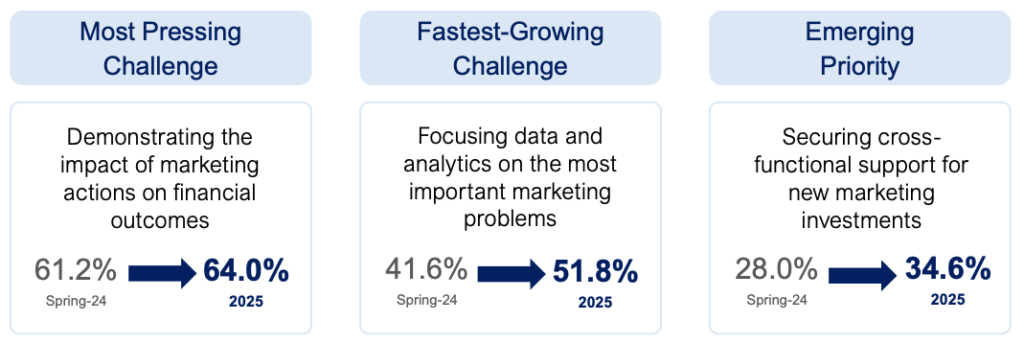
(Source)
The fact is, much of the value driven by PR can’t be quantified so easily, and the aspects that can be measured are generally through proxy metrics that show us we’re on the right track, as opposed to the precise bottom line. Here at InboundJunction, we like to work with our clients to put together reporting solutions that make sense given the specifics of their PR campaigns, and generally, this involves a mix of qualitative and quantitative metrics.
The idea that the ROI of PR is elusive can be challenging for CMOs fixated on performance campaigns and other senior executives who are used to justifying everything they do with spreadsheets. PR is about building a brand, as opposed to driving direct sales, and that makes it an easy target when budgets are scrutinized.
But people don’t do business with companies they don’t know and trust, especially in B2B, and that unto itself makes PR a must for growing companies. Thankfully, more and more marketing decision-makers realize this nowadays.
As the “earned media” part of your marketing media mix, PR works to lift brand awareness, brand reputation, and audience sentiment. These benefits serve to lower perceived risk for buyers, streamline decision-making, and strengthen client relationships, which, in turn, translates into stronger sales and retention.
Recent studies, like the Marketing Week Language of Effectiveness report, show a return from demand generation to brand marketing, largely driven by PR. According to the report, brand messaging is now seen as the most important tactic for driving growth, ahead of performance advertising, and respondents favored PR over price-based promotions when it comes to marketing mix importance.
Let’s take a closer look at why the ROI of PR is so elusive and what workarounds are available. Along the way, we’ll explore some recommended perspective shifts and explain why PR drives significant business value, despite the quantifiable attribution issue.
Measuring the Business Impact of PR Is Hard to Do
The benefits that PR delivers, like brand recognition, increased credibility and trust, are nuanced and complex. Reducing these benefits to dollar numbers necessarily requires over-simplifying them. These benefits are also long-term in nature, so in the short-term, ROI could be almost invisible.

(Source)
Much of the opacity is the result of data being safeguarded by third-party publishing outlets. Online publications don’t generally provide outsiders with access to their analytics, so even metrics like monthly audience size, article-specific views and clickthroughs are guessing games. There are services like Similarweb and VStat that use complex algorithms to estimate how many visits a given website receives per month, but these data sources are hardly definitive, and they can’t tell you how many people looked at a given page.
So you’re usually left with proxy metrics like share of voice, social media follows, Advertising Equivalent Value (AVE), Earned Media Value (EMV), and leads captured from referred traffic, all of which are what it says on the label: proxies. They aren’t at all precise reflections of reality, they’re dependent on conjecture-based attribution methods, and they can be easily misinterpreted.
Analyzing earned media impact and calculating metrics like EMV is labor-intensive and arguably not the best use of your limited time. The idea here is to quantify what it would have cost you to buy as much attention as you got from a given PR hit had you used paid media instead. To do this well, you’d need a deep, up-to-date understanding of various types of ad media costs, and even then, it’s apples-to-oranges, because people trust content published by third-party media properties far more than they trust sponsored messaging.
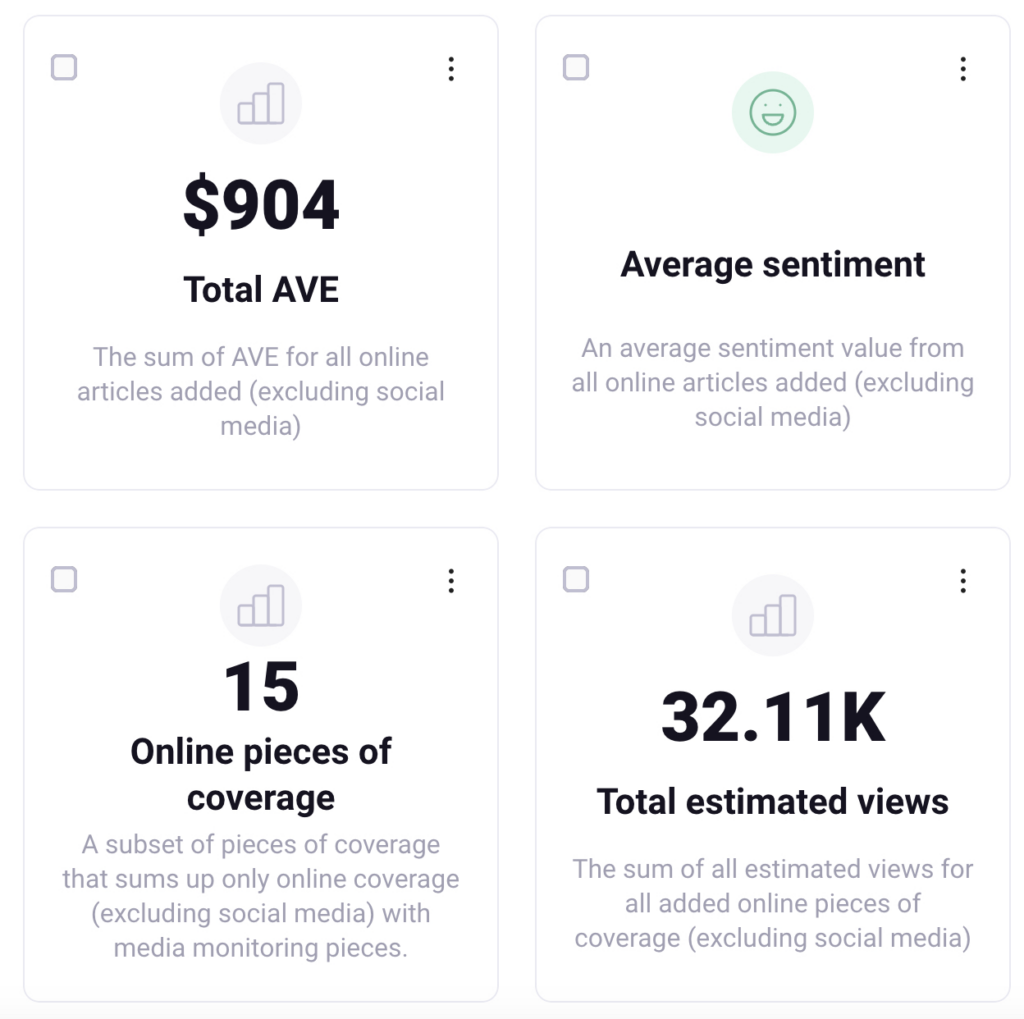
(Source)
Simply deciding which metrics to use can be a long undertaking, and comparing the relative value of different types of earned media to each other, or against paid or owned media, can be an exercise in frustration.
Do 200 people listening to your hour-long appearance on a highly targeted podcast outweigh 700 people clicking on a LinkedIn ad, or vice versa? What about if an influencer shared your podcast slot, does that change everything? As the lines between PR and other types of marketing become more blurred and intersect more often, it’s even more challenging to isolate the effectiveness of PR efforts.
A lack of industry-wide benchmarks makes things even more challenging, as marketers rarely agree on what good ROI looks like, let alone how to measure it. True ROI measurement would require calculating the extent to which each sale your company makes was made easier by PR, and there are simply too many blind spots in the customer’s journey to do that well. Besides, it’s not how the customer’s journey works.
And yet, having some system in place for measuring PR impact is a necessary evil. Budgets and strategies do need to be justified and contextualized. It’s also possible, albeit with some major caveats. Here are some rules-of-thumb for measuring ROI on PR and communicating success.
Quantifying Brand Awareness Lift
A recent Dentsu B2B marketing study found that brand awareness has overtaken performance marketing in terms of importance to ongoing strategy. Today, buyers are still interested in cold factors like a vendor’s pricing and software features, but they’re even more influenced by emotional factors like feeling that they’re in the good hands of known experts.
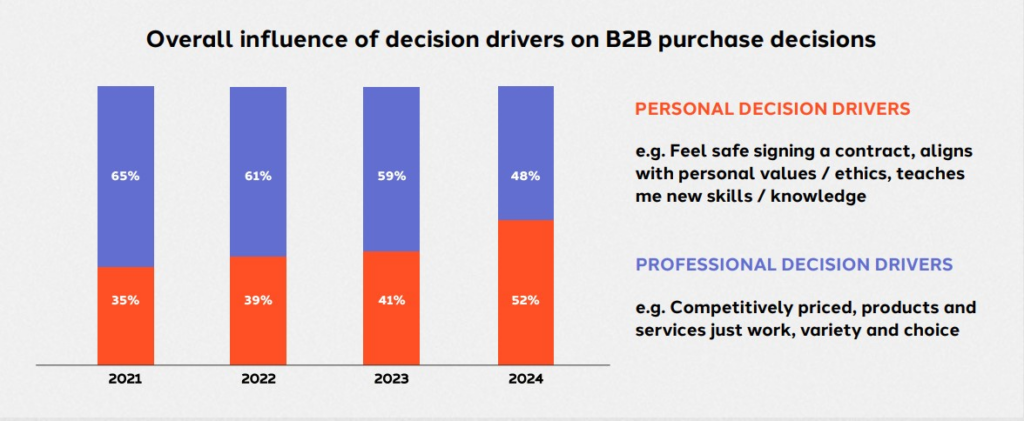
(Source)
Today, much of the buying journey takes place before the vendor even realizes it’s begun. Buyers have to know that your brand exists in order to choose to investigate it, but that awareness is hardly traceable in a linear manner, and much of it often takes place without any purchase intent.
Through TikTok feeds, insightful podcasts, Reddit discussion threads, curated newsletters, trade publications and any number of other media channels, people might encounter content about your company and your leadership team’s take on relevant industry challenges. They might continue consuming this content for years on end, without them even needing your product. Then, when the time comes, and they’re actually in the market for a solution, they’ll feel better about the brand they’re familiar with.
How do you assign a dollar value to all your PR efforts that made that familiarity possible over the course of years?
Don’t make the mistake of counting how many people landed on your website through a link in a PR media hit – or worse, how many converted. Research shows that analytics tools aren’t capable of revealing the true sources of much web traffic. The principles of “dark social” referral data blind spots apply to content media properties too.
Even if you’re seeing that a few people have clicked through to your website from an article that mentions you, that’s going to be a misleading signal, because it’s simply not how the long-term brand awareness play works. It’s certainly not how the buyer’s journey works, and it will never measure up to the ROI of advertising, even though traffic is the only type of value that ads drive.
However, there are some metrics that can point to brand awareness trends, like organic search referrals, especially for branded search terms. This only offers a partial picture, but if you see more and more people googling your brand name, then it’s a reasonable proxy metric that indicates your PR efforts are indeed positively impacting brand awareness.
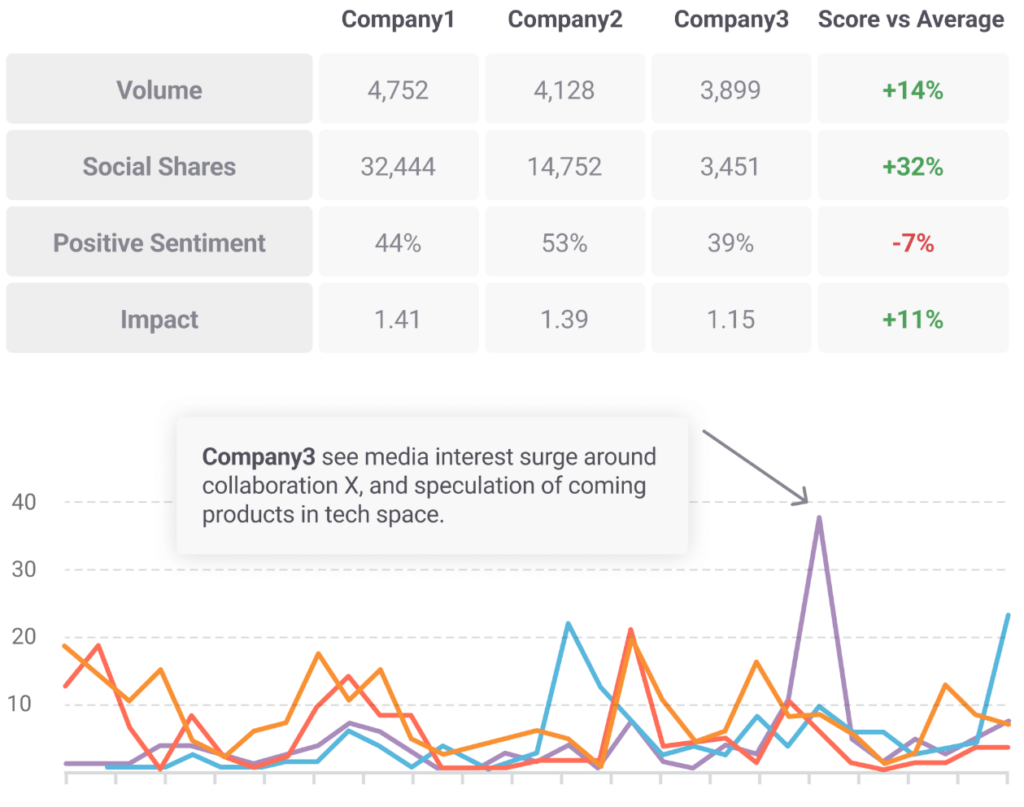
(Source)
Share of voice analysis, particularly in social media and wider earned media, is also useful as a benchmark and to contextualize impact of various PR elements. Just make sure that you’re looking at the pattern over time, as opposed to operating under the erroneous belief that everyone who sees content about you will post about it on X.
Brand Reputation, Engagement and Sentiment Trends
As corporate buying committees expand and digital natives gradually replace Gen X as key decision-makers, personal decision drivers are overtaking professional ones. This means that more nebulous issues like trust and shared values are replacing hard ones like price or efficiency of products and services.
Holistically, all of your PR hits, but especially your thought leadership PR assets like interviews and contributed opinion pieces, build credibility, authority, and trust in ways that paid or owned media can’t hope to replicate.
Here too, buyers form their conclusions before they start the purchase journey, or at least before you’re aware of it. Potential vendors are ruled out before the game begins – again, in a non-linear journey that’s hard to track.
So what are your options? Brand authority isn’t exactly a metric, so it’s tricky to track. Keyword ranking trends can help reveal “authority” in the Google sense of the word, but you need to be certain that you’re tracking the right SEO terms, and not all PR campaigns are designed for SEO impact. Despite Google’s E-A-T guidelines, the algorithm wasn’t designed to measure how people feel about your brand.
What’s more, keyword rankings show your website content’s performance in relation to your competition, or your own brand last month or last year, so it’s not absolute. Any rises and falls could be due to changes in the market which have nothing to do with your PR efforts.
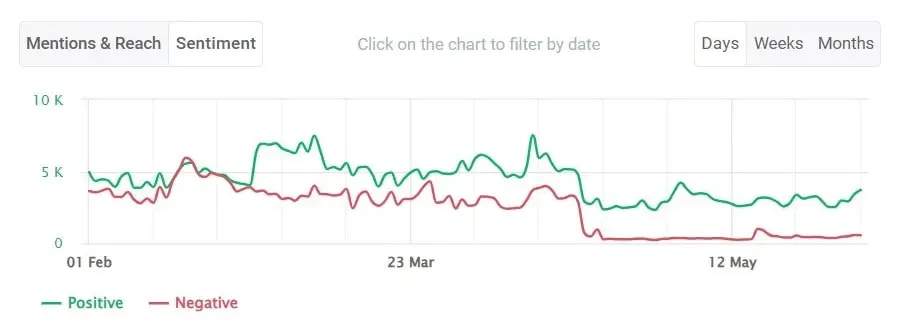
(Source)
Tracking sentiment analysis over time can be helpful, especially if you can correlate major PR pushes to specific sentiment fluctuations on your timeline.
Social shares and mentions, and “share of conversation” are likewise important proxy metrics for attitudes towards your brand. But you’ll still need to drill down beyond the numbers to see the context in order to be sure of their impact. This is more of a qualitative exercise, but it’s important to keep an eye on who is sharing or mentioning your brand, whether it’s negative publicity (yes there is such a thing), and whether it’s owned, earned, or paid content that’s seeing traction.
Earned, Everywhere, All at Once
PR might not directly refer sales leads your way, but it boosts the quality of the leads you do capture, and it smooths the path to conversion.
If you can track a correlation between an increase in social media followers, mentions, keyword rankings, organic search referrals, stories and guest slots you placed, against results like sales volume, “time to close,” and stock price increases, then you can feel confident that your PR efforts are bearing fruit. But that’s still not enough for you to optimize your strategy.
Indeed, there’s no single metric you can track to measure ROI for PR efforts. But before you give up in despair, there are a number of overlapping ones that together help to paint a picture of PR impact. Each metric in isolation is just a dab of color, but when you look at them all together, you can see whether your PR efforts are going in the right direction.
Most importantly, you need to know what constitutes ROI for your company. This can be its own challenge, but it’s the essential prerequisite for any ROI measurements. The main thing is to shift your mindset away from cold numbers, and towards a more conceptual approach that looks at the holistic impact of earned media.
